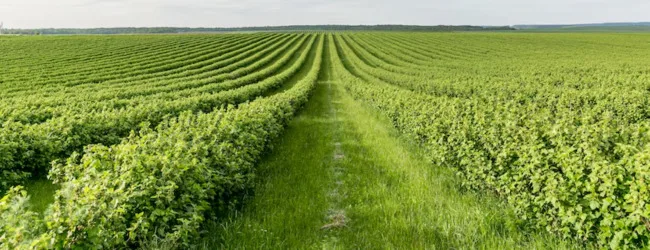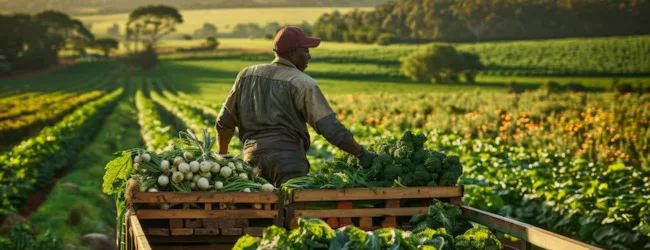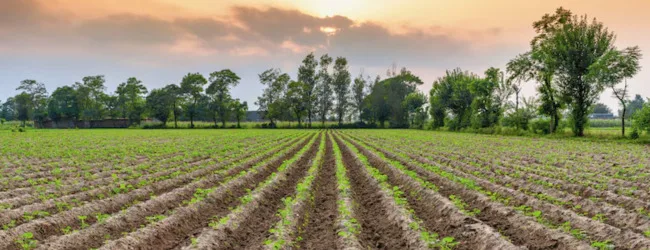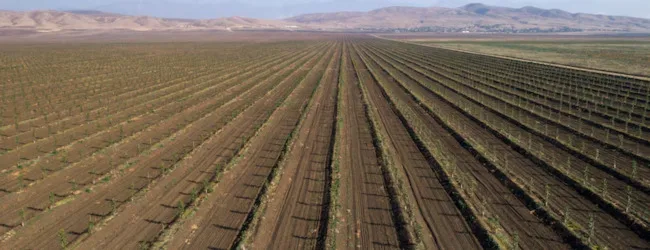Table of contents
Extensive farming is a large-scale agricultural method that focuses on cultivating vast areas of land with minimal labor and capital inputs per unit area. In India, this approach is gaining traction, especially in regions with abundant land and lower population densities. This comprehensive guide delves into the nuances of extensive farming in the Indian context, offering insights into its practices, investments, benefits, and more.
What is Extensive Farming?

Extensive farming is an agricultural system characterised by the use of large land areas with minimal inputs of labour, fertilisers, and capital per unit area. This method relies heavily on natural fertility, rainfall, and mechanisation to achieve production goals. It’s particularly suitable for regions where land is abundant, but labour and capital are limited.
Key Features of Extensive Farming

- Large Land Holdings: Typically involves farms exceeding 250 hectares.
- Low Labour Intensity: Minimal human labour per unit area due to mechanisation.
- Monoculture Practices: Focus on a single crop over large areas.
- Dependence on Natural Resources: Relies on rainfall and natural soil fertility.
- Lower Input Costs: Reduced expenditure on fertilisers, pesticides, and labour.
- Variable Yields: Yields per hectare may be lower, but total output can be substantial due to the large area cultivated.
Extensive Farming Practices in India

In India, extensive farming is practised in various regions, adapting to local conditions and crop suitability.
1. Wheat Cultivation in Punjab and Haryana
- Region: Punjab and Haryana.
- Practice: Large-scale wheat farming using mechanised tools.
- Outcome: Significant contributor to India’s wheat production. apeda.gov.in
2. Maize Farming in Gadchiroli, Maharashtra
- Region: Gadchiroli district.
- Practice: Shift from paddy to maize due to drought resistance.
- Outcome: Maize cultivation expanded from 481 hectares in 2022 to over 9,000 hectares. The Times of India
3. Fruit Plantations in Maharashtra
- Region: Nashik, Amravati, and Pune divisions.
- Practice: Large-scale cultivation of mango, pomegranate, guava, and lemon.
- Outcome: Fruit plantation area increased by 68,541 hectares in 2024-25.
💡 Pro Tip: If you want to start a Business but have too many doubts, connect with a Business expert from Boss Wallah for guidance – Check Out
Investment and Cost Considerations
Investing in extensive farming requires careful planning, especially regarding land acquisition and mechanisation.
Land Costs (Approximate)
| State/Region | Cost per Acre (₹) |
|---|---|
| Delhi | 10 Crore |
| Telangana | 25 Lakh |
| Tamil Nadu | 20 Lakh |
| Maharashtra | 9–15 Lakh |
| Andhra Pradesh | 9–15 Lakh |
| Karnataka | 9–15 Lakh |
| Assam, Bihar, Chhattisgarh | 1.5–4 Lakh |
Mechanization Costs
- Tractors: ₹5–10 Lakh.
- Harvesters: ₹15–25 Lakh.
- Irrigation Systems: ₹1–5 Lakh.
- Total Initial Investment: Varies based on farm size and equipment choices.
ALSO READ | Jhoom Farming: Definition, Significance, Practices & More
Benefits of Extensive Farming

- Economies of Scale: Lower cost per unit due to large-scale operations.
- Reduced Labour Costs: Mechanisation minimises the need for manual labour.
- Sustainability: Lower input usage can lead to reduced environmental impact.
- Adaptability: Suitable for regions with abundant land and limited labour.
Challenges in Extensive Farming
- Lower Yields per Hectare: Compared to intensive farming methods.
- Market Access: Remote farm locations may face difficulties in accessing markets.
- Initial Capital Requirement: High upfront investment in land and machinery.
- Environmental Concerns: Monoculture practices can lead to soil degradation over time.
ALSO READ | Permaculture Farming: A Comprehensive Guide
Government Initiatives Supporting Extensive Farming

The Indian government has launched several schemes to promote sustainable and extensive farming practices:
- Subsidies for Mechanisation: In Uttar Pradesh, tractor ownership increased by over 62% in the last eight years, aided by nearly 50% subsidies on tractor-operated equipment.
- Crop Diversification Programs: Encouraging farmers to shift from traditional crops to more profitable alternatives.
- Infrastructure Development: Investments in rural roads and storage facilities to improve market access.
- Training and Education: Establishment of Krishi Vigyan Kendras (KVKs) to disseminate knowledge on modern farming techniques.
Need Expert Guidance?
Starting a business can be challenging, but you don’t have to do it alone! At Boss Wallah, our 2,000+ business experts are ready to provide valuable insights and guidance. Whether you need help with marketing, finance, sourcing, or any other area of any business, our business experts are here to help you succeed
Confused about Which Business to Start?
Want to start your own business but unsure which one to choose? Explore Boss Wallah, where you’ll find 500+ courses by successful business owners, featuring practical, step-by-step guides on starting and growing various businesses.
Find your perfect business idea today
Conclusion
Extensive farming presents a viable agricultural model for India, especially in regions with abundant land resources. While it offers several benefits, including cost-effectiveness and sustainability, challenges such as lower yields and market access need to be addressed. With supportive government policies and technological advancements, extensive farming can contribute significantly to India’s agricultural growth and food security.
Frequently Asked Questions (FAQs)
1. What is the main difference between extensive and intensive farming?
- Extensive farming uses large land areas with minimal inputs, while intensive farming uses smaller areas with high inputs and labour
2. Is extensive farming suitable for all regions in India?
- It’s best suited for regions with abundant land and lower population densities.
3. What crops are commonly grown in extensive farming?
- Crops like wheat, maize, and certain fruits are commonly cultivated.
4. How does mechanisation benefit extensive farming?
- It reduces labour costs and increases efficiency in large-scale operations.
5. Are there government subsidies available for extensive farming?
- Yes, various subsidies are available for equipment and infrastructure development.
6. What are the environmental impacts of extensive farming?
- It can lead to soil degradation if not managed sustainably.
7. Can extensive farming be profitable?
- Yes, especially when economies of scale and government support are leveraged.
8. What is the initial investment required for extensive farming?
- It varies but includes costs for land acquisition and mechanisation.
9. How does extensive farming affect employment in rural areas?
- It may reduce labour demand due to mechanisation, but can create jobs in equipment maintenance and logistics.
10. Is extensive farming sustainable in the long term?
- With proper land management and crop rotation, it can be sustainable.


